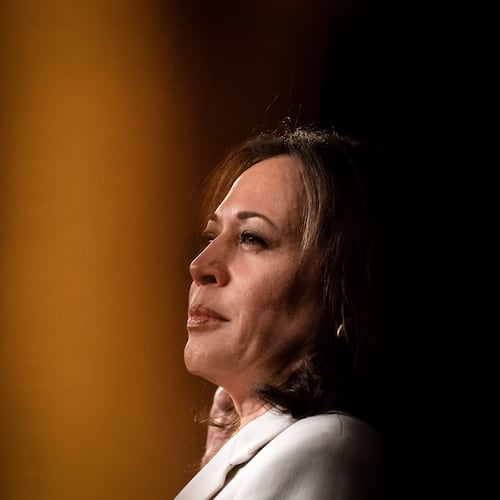For 82 years, a tidal gauge has been located at the same spot on the Georgia coast, at the Fort Pulaski National Monument on Cockspur Island.
On Tuesday, it became clear that Hurricane Matthew's record sea surge of last October would not be surpassed. Hurricane Irma's shoreward push fell short by a mere three inches and change.
You might think this good news, until you realize that Matthew was corralled in the Atlantic. Irma clawed her way up the west coast of Florida, and still had energy to maul the East Coast – inundating Jacksonville, covering much of Tybee Island, and flooding the streets of Savannah and Charleston.
In other words, the second-place finisher at Fort Pulaski did all that with one hand tied behind her back. Never mind her ability, at the same time, to cover the entire state of Georgia with a green radar mitten.
You no doubt have heard that Scott Pruitt, the head of the federal Environmental Protection Agency, thinks it “insensitive” to discuss climate change policy in this particular climate, which has given us both Harvey and Irma over a three-week period.
Yes, we need to be respectful of a grim body count that stretches two thousand miles, from the Caribbean to well beyond Houston. Lost homes and other property will take years to recoup as well.
But I will take my permission from Tomás Regalado, the mayor of suffering Miami. Of course, we should talk about it, he said: “This is a truly, truly poster child for what is to come.”
Harvey and Irma were killer storms, no doubt. But they were policy drivers, too. Beyond the death and destruction, the last four weeks have amounted to a nonstop, TV-driven campaign against federal cuts to this country’s meteorological operations – as proposed by President Donald Trump this spring.
Aside from cuts to scientific research elsewhere, Trump proposed to end a National Oceanic and Atmospheric Administration program to build better prediction models for tornadoes in the South, and $11 million from a tsunami-warning program for the West Coast.
The National Weather Service would receive a 5 percent haircut. But NOAA’s weather-satellite budget would be trimmed by 17 percent. Scientists presume the Trump administration has attempted to target climate change research rather than weather forecasting. But the two bleed into each other.
“So yes, they’re not cutting the actual weather service, but one of the primary tools that the weather service uses – that office is going to get cut massively,” said Scott Weaver, leader of the climate science team at the D.C.-based Environmental Defense Fund.
Both Harvey and Irma demonstrated that more intense storms require closer watching. “As we’re starting to experience more extreme events, the ability to predict the weather in real time becomes even more important than it was just 20 or 30 years ago,” Weaver said.
In Athens, Marshall Shepherd, director of the atmospheric science program at the University of Georgia and a former president of the American Meteorological Society, characterized the tracking of Harvey and Irma as an effective demonstration of science that works.
The first National Hurricane Center bulletin on Harvey was issued at 11 a.m. on Aug. 17. It made landfall in Texas eight days later. Irma was first noticed on Aug. 30, and struck the Keys nine days later.
“With both Harvey and Irma, we were talking about the threat of these days to weeks in advance. That’s not by accident. That’s because of advances that we’re making,” Shepherd said.
He thinks Trump’s cuts are being reconsidered. “My sense is that cuts won’t be as dramatic as originally proposed by the administration,” Shepherd said. “Congress is learning the value of NOAA.”
It’s possible that Harvey and Irma may even make it easier for Republicans to utter the words “climate” and “change.” Together.
Daniel Rochberg is a former U.S. State Department worker on the faculty of Emory University. He’s one of the organizers behind the Georgia Climate Project, which debuted this spring. It’s intended to become a network of academics encompassing the entire state.
“The idea is that, any time a leader in the state wants to work this issue, now or in the future, from the Republican side or the Democratic side, they should have a team of folks to turn to, ready to roll with information at their fingertips,” Rochberg said.
I asked him whether any Republicans, from Gov. Nathan Deal to U.S. Sens. Johnny Isakson or David Perdue, or GOP members of the U.S. House, had expressed any interest. Not yet, Rochberg said.
But he is optimistic, and noted two “small but important” messages from Georgia’s state government.
In 2015, the wildlife division of the state Department of Natural Resources produced a report on climate change's impact on animal species throughout the state.
Last November, DNR convened a "climate ready" conference. "We know that sea level's rising. To not prepare for it is really not a responsible course of action, no matter what your political inclinations," Spud Woodward, director of DNR's coastal resources division, was quoted as saying afterwards.
That conference, Rochberg said, “was a signal that the state is willing to convene a conversation around this, despite the politically charged nature of the issue.”
The needle that’s being threaded here: Conversations about the effects of climate change may be necessary – especially when crop losses, flooding, or other observable effects are involved. Dialogue about the causes remains off-limits, for that could also lead to a discussion of remedies. And that’s where the polarization starts.
Rochberg is kicking around the idea of inviting 50 conservative and 50 liberal students to Emory next spring, to see if some common ground on the topic might be found.
Just in time for the 2018 hurricane season.
About the Author
The Latest
Featured




